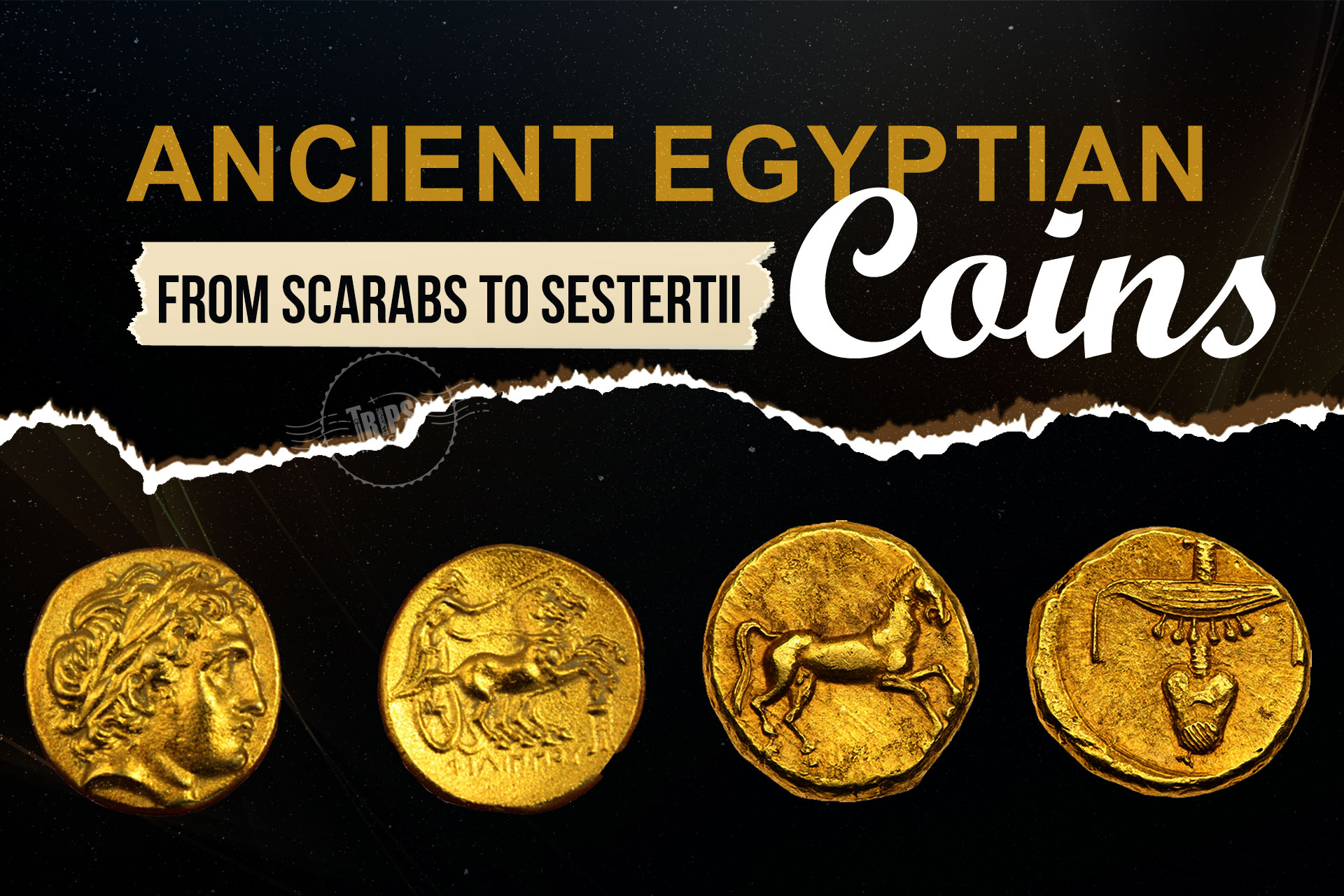
Ancient Egyptian Coins
In the enigmatic world of ancient Egypt, amidst the grandeur of pyramids and the mystique of pharaohs, there exists a hidden treasure trove of history - ancient Egyptian coins. These miniature marvels, crafted with precision and adorned with symbols of a civilization that thrived for millennia, offer a unique glimpse into the economic, cultural, and political tapestry of the Nile Valley. Dating back to as early as 2000 BCE, these coins, known as "Hacksilver" were often made from precious metals like silver and gold. Each Ancient Egyptian coin tells a story of a thriving society that traded with neighboring lands, worshipped a pantheon of gods, and reveled in the artistry of their craft. Trips In Egypt team will shed light on these coins as we go deeper to help you gain unique historical information for those who are interested in ancient Egyptian coins.

The History of Coinage in Ancient Egypt
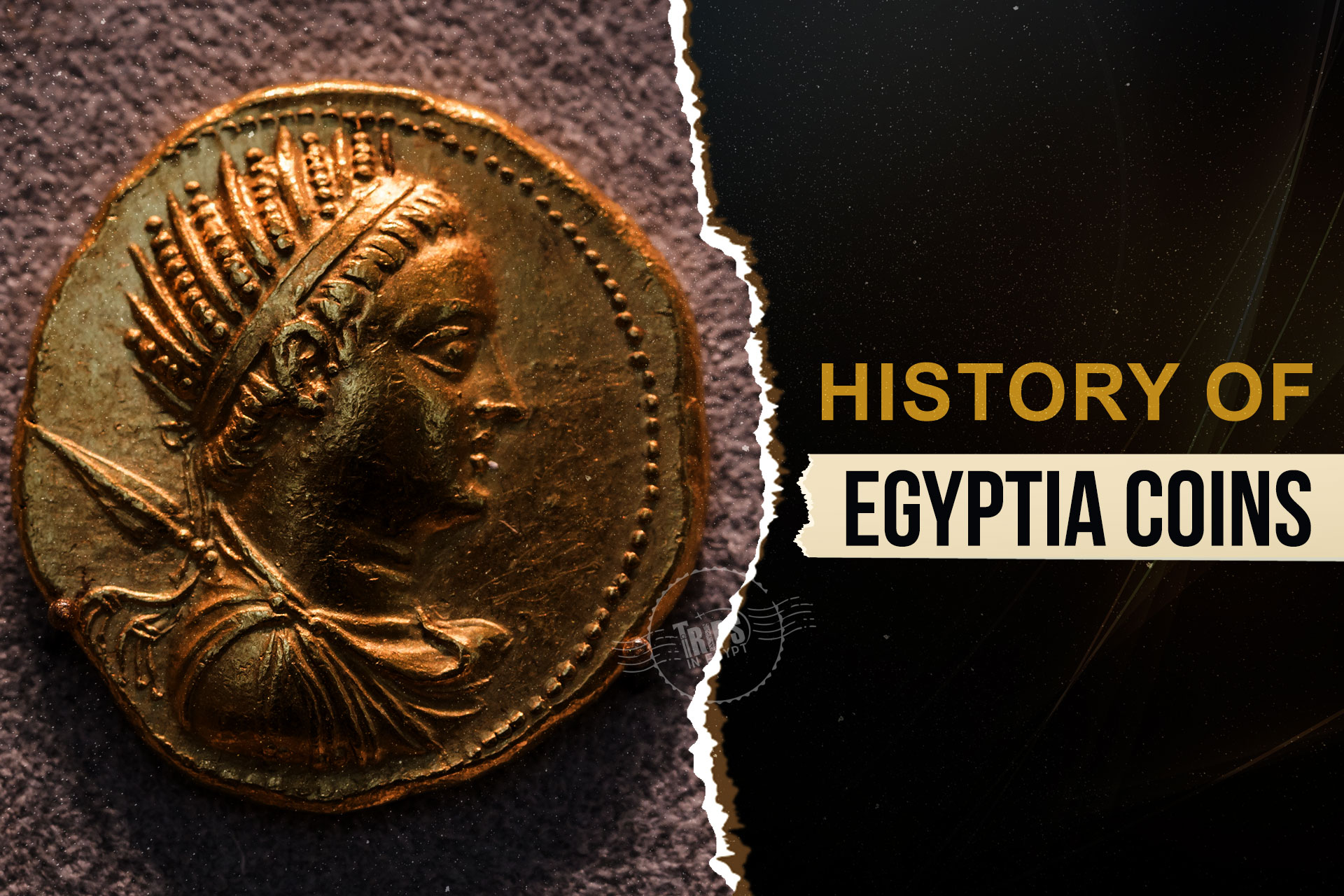
Egyptian coinage was discovered around the fifth century BC when the ancient Egyptians established several gold pieces for use in commerce. The gold coin was known as a "Stater" which means "Pure Gold" in the ancient Egyptian language, and it was the first coin ever established in ancient Egypt during the reign of Pharaoh "Teos" of the 30th Dynasty in 360 BC.
Bronze was being used to pay for daily usage, and ancient Egyptian coinage had a great effect on Egyptian trade and economics by the middle of the fourth century BC which intensified during the Roman period and they utilized pure gold.
This era for Egyptian coinage ended with the Roman invasion of Egypt when Roman coins superseded Egyptian coins, and then Egypt was dominated for the next two thousand years by the Byzantine Empire and the Romans. The piaster was the official coin until 1834, and in 1834, the Egyptian pound was founded, then, the golden coins and silver were removed later but they were revived once again in 1916, and the golden coins were expanded later and had new twenty, fifty piaster, and five gold coins.

The Design of the Ancient Egyptian Coins
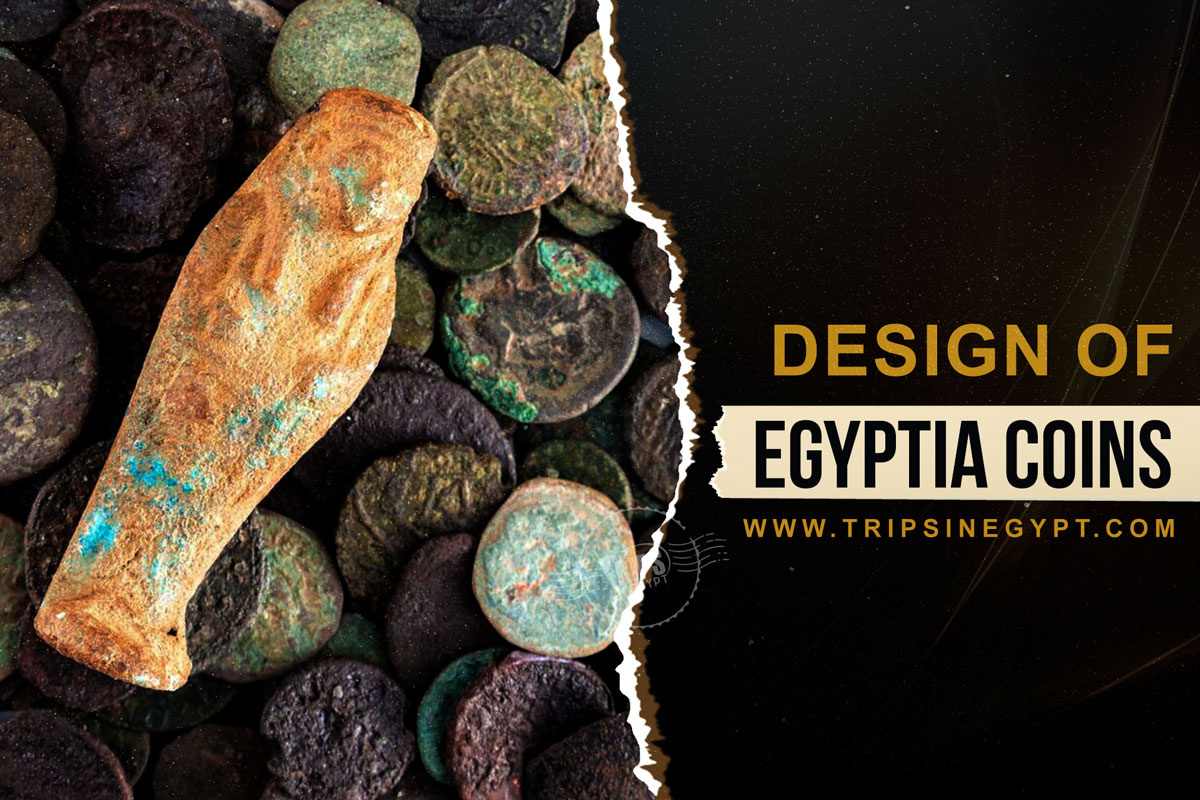
The amazing ancient Egyptian coins are beautiful antiques of pure gold that combine the ancient skills of Egyptian people and the cultural significance of Egyptian trade. These amazing Egyptian coins had beautiful portraits such as “the Ankh” and “the Scarab” which have significance in long Egyptian history, and they have amazing portraits of ancient Egyptian pharaohs and kings on Egyptian copper, gold, and silver coins. These unique and wonderful pieces were different in shape, design, and size which added a lot to their historical value. So, the design of ancient Egyptian coins shows the cultural value of the Golden Age in Egypt.

Types of Ancient Egyptian Coins
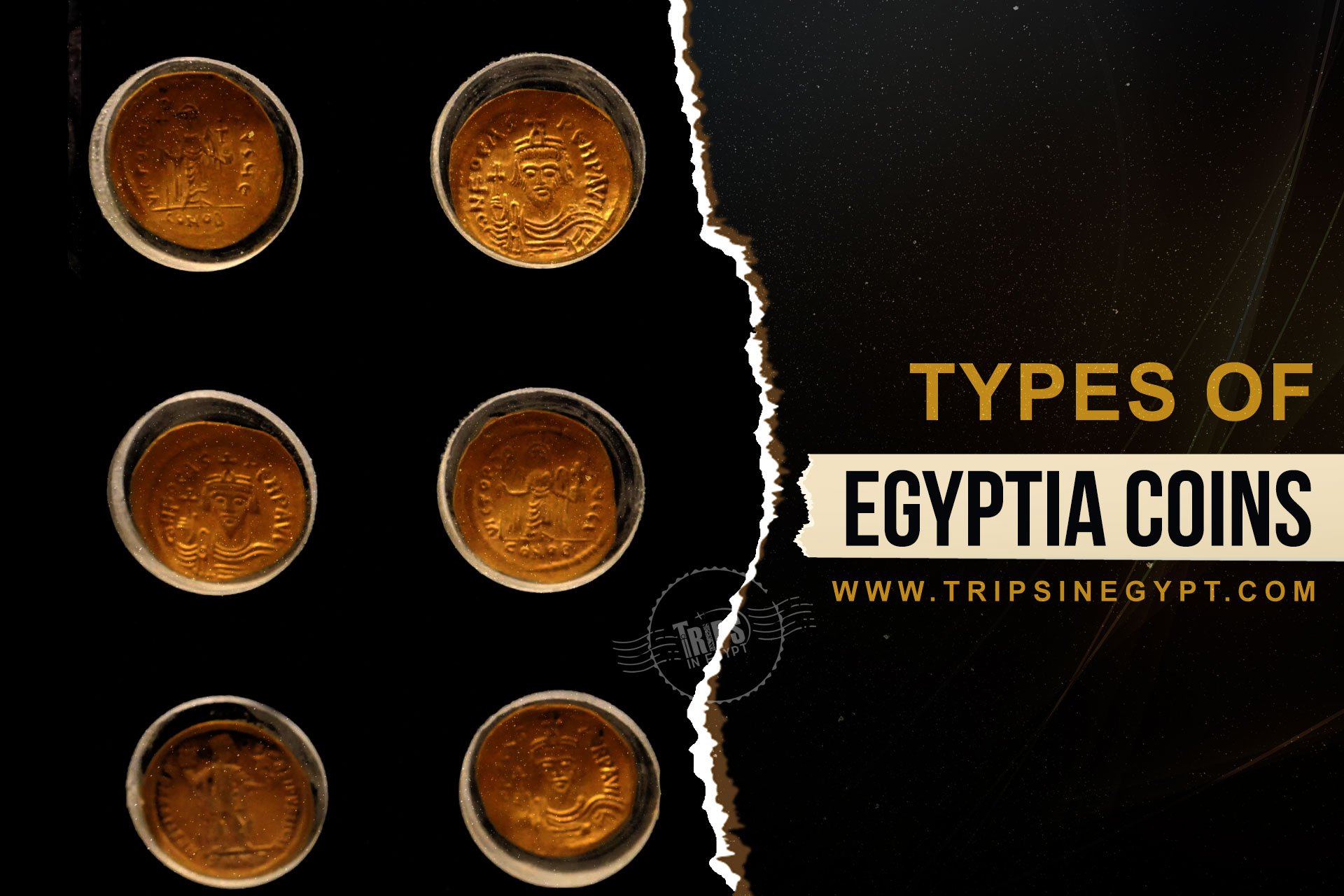
Ancient Egyptian coins were found for use as official coins and were discovered during the Ptolemaic era. “Ptolemy II Philadelphus” made great efforts to use the cash in Egypt with coins being established at Alexandria and Memphis (The ancient Capital City of Egypt). Foreign coins were then confiscated, and a strict policy of a single coin was implemented. Silver was rarer and hence more expensive than gold during this time which made it a great coin.
Bronze was then produced to be used in coins during the Ptolemaic period, and one of these coins weighed about 100 grams. Egypt transitioned from a society that relied mostly on barter to one that excelled in its economy to the degree that an official coin was utilized at the end of the Ptolemaic period, and this had another benefit of allowing for more efficient taxes for trade. Until “Diocletian” brought Egyptian coinage into line with the rest of the Roman Empire in 297 AD, the Egyptian monetary system remained isolated. During Byzantine rule in Egypt, coins were substituted by Roman religious iconography with Christian iconography.
Islam's Entry into Egypt in 639 AD ended Byzantine rule, so, the usage of Byzantine coinage survived in Egypt, as it was in Syria. On the other side of the caliphate, the usage of Sassanian coinage remained in some countries such as Iraq and Iran. Some Christian imagery was replaced with Islamic symbols, for example, on one coin, the three standing crucifixes were replaced with orbs, while the inscription was replaced with the Islamic verse of faith in Arabic on the opposite side. The new coins later were developed without any portraits and instead had Qur'anic verses during the rule of Caliph “Abd Al-Malik Ibn Marwan” in 697 CE.
The Ottoman’s Entry into Egypt and the end era of the Mamluks resulted in a new coin that was controlled by the Ottoman Empire. The Ottoman rule of Egypt in 1517 ended the rules that had governed establishing the coins’ design over the previous 820 years. During the duration of the Abbasid and the Umayyad caliphate in Egypt, there was a minor change to establish the coins that were made, just in the design of the coin, and the portrait of the caliph or the ruler of Egypt. Later, during the Fatimid rule of Egypt, there were several coins with Shi'a doctrine were issued but were it were removed because of the anger of the Sunni people of Egypt.
The monetary system in Egypt was shaken up in 1834 as part of Khedive Muhammed Ali's attempts to modernize Egypt's coins when he established "The Egyptian Pound" which was a new currency during this rule. Although Egyptian coins are still in use today, Egyptian coinage has undergone significant design modifications throughout many centuries. Egyptian Coins in the 1952 revolution resembled British coinage in style, just to represent the might, and power of the kings during this era. By the collapse of the rule of kings in 1952, Egypt declared a republic country to remove all symbols of the governing monarchy. Then, Egypt established new coins that were decorated with beautiful portraits of Egyptian kings and replaced them with other portraits of Egyptian history. The current coins of Egypt honor important events of ancient Egypt such as portraits of the Pyramids of Giza, the Golden mask of King “Tutankhamun”, and also medical achievements during the COVID-19 epidemic.

Old Coin Names
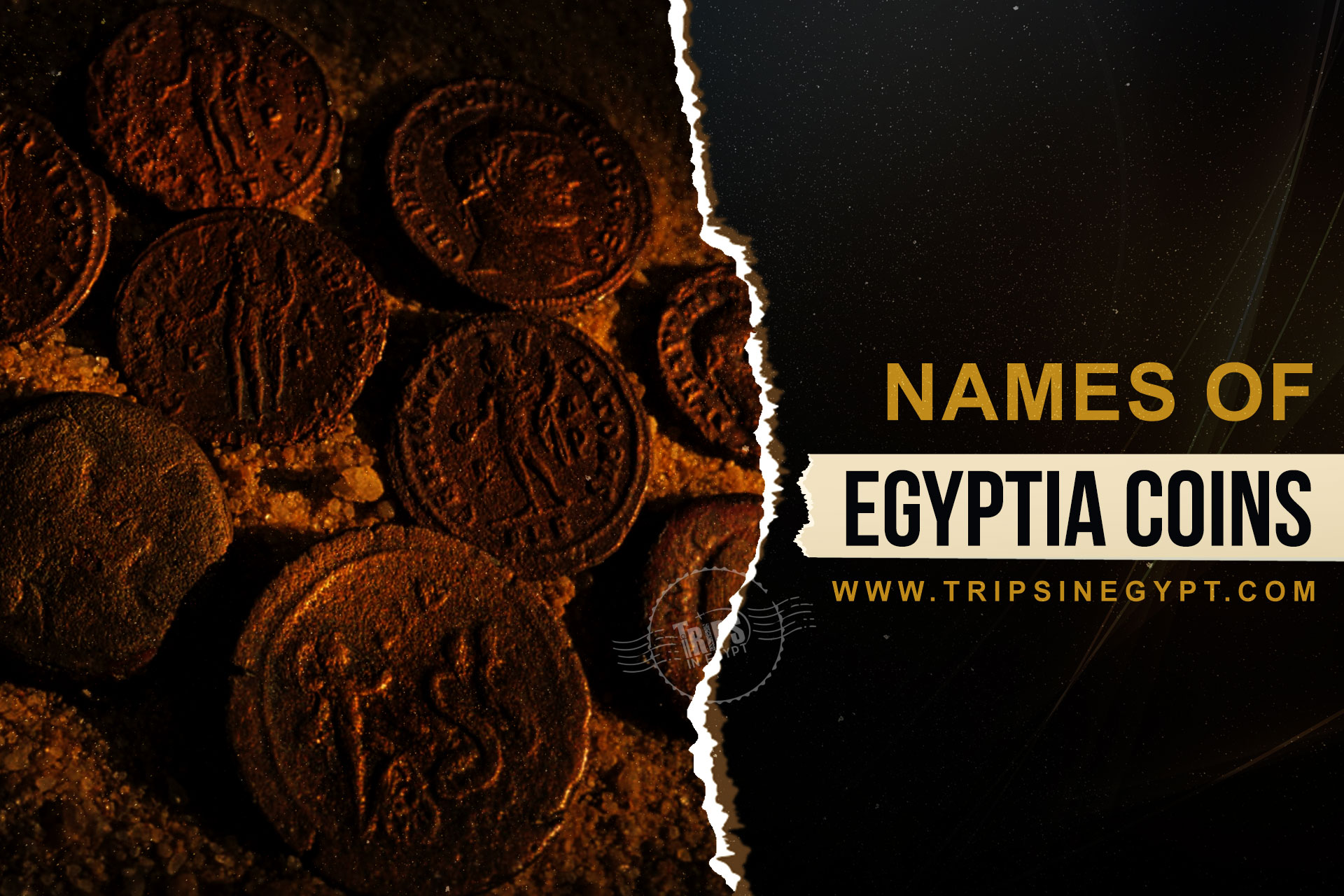
Piastre
The Piastre is a unit of money that was used in Egypt during the Ottoman Empire and it has taken different shapes.
Millieme
Millieme is a subunit of the Egyptian pound, and it is issued in this denomination.
Qirsh
Qirsh is a subunit of the Egyptian pound, and it has historical coins issued.
Para
Para is a smaller denomination that was used in Ottoman Egypt.
Abu Qir Token
Abu Qir Tokens were used during the rule of Muhammad Ali Pasha in the 19th century.
Mohur
Mohur was used for gold coins in many destinations in Egypt during historical periods.

Economic and Trade Influence of Ancient Egyptian Coins
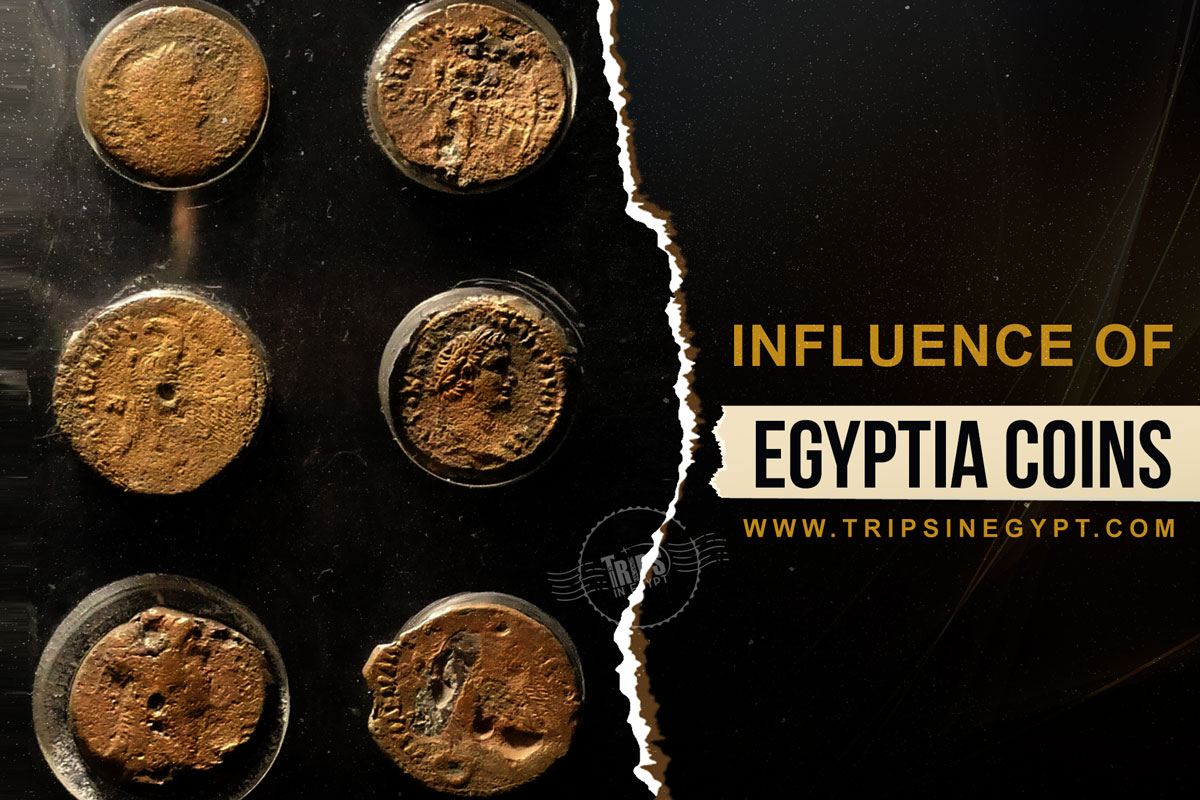
The Ancient Egyptian coinage played a very important role in the economic and commercial fields as it improved local and international trade by providing coins for the Egyptian people. The Egyptian coins had portraits of the Egyptian kings and rulers not only as cash but also as symbols of political symbolism.
The Egyptian coinage also helped the economic system by encouraging the same style and also was used for tax collection to allow the Egyptian governments to collect taxes in a more organized way. The ancient Egyptian Coins also played a great role as they acted as a kind of wealth storage and it has metal worth and precious trade value. The Changes in Egyptian coin systems show the changing economic and political realities.

Notable Examples of Ancient Egyptian Coins
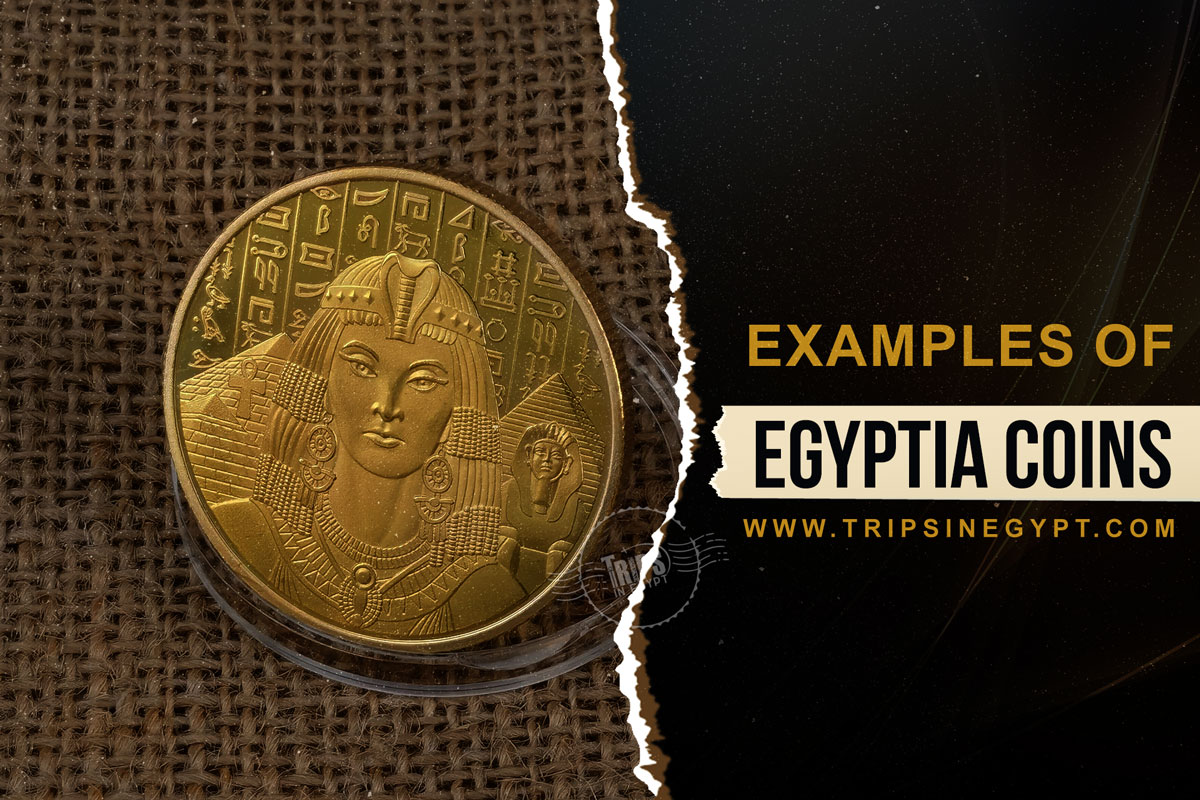
There are unique examples of ancient Egyptian coins such as the gold stater of "Ptolemy II" which portrays "Alexander the Great" which is the silver tetradrachm “the iconic owl of Athena” during the Ptolemaic period, and the bronze coins of "Cleopatra VII", these wonderful coins represent the culture and historical scene. Egypt has some amazing ancient coins such as:
Ptolemaic Tetradrachms: The Ptolemaic Kingdom has a great history in Egypt as it created many wonderful tetradrachms that portray great kings like Cleopatra and Ptolemy.
Gold Staters of King Nectanebo II: The King "Nectanebo II" was a 30th Dynasty pharaoh who created gold staters with impressive decorations that portrayed the falcon god “Horus”.
Silver Drachms of Alexander the Great: The minted silver drachms portray the youthful “Alexander the Great” wearing Hercules' lion-skin headpiece which is a unique coin that shows an important moment in Egyptian history.
Cleopatra VII Silver Tetradrachms: The silver tetradrachms portraits “Cleopatra VII” with wonderful designs during the final age of the independence of ancient Egypt.
Ramesses II’s Coins: The ancient Egyptian coin honors King "Ramesses II" who was one of the most powerful pharaohs in ancient Egypt, these portraits show the ancient Egyptian Pharaoh Ramesses II and his New grandeur of the New Kingdom.
Gold Octadrachm of Ptolemy II: King "Ptolemy II" established a limited amount of gold octadrachms with a great portrait of Alexander the Great, these unique ancient coins are well-known for their perfect skills in their manufacturing.

Facts about Ancient Egyptian Coins
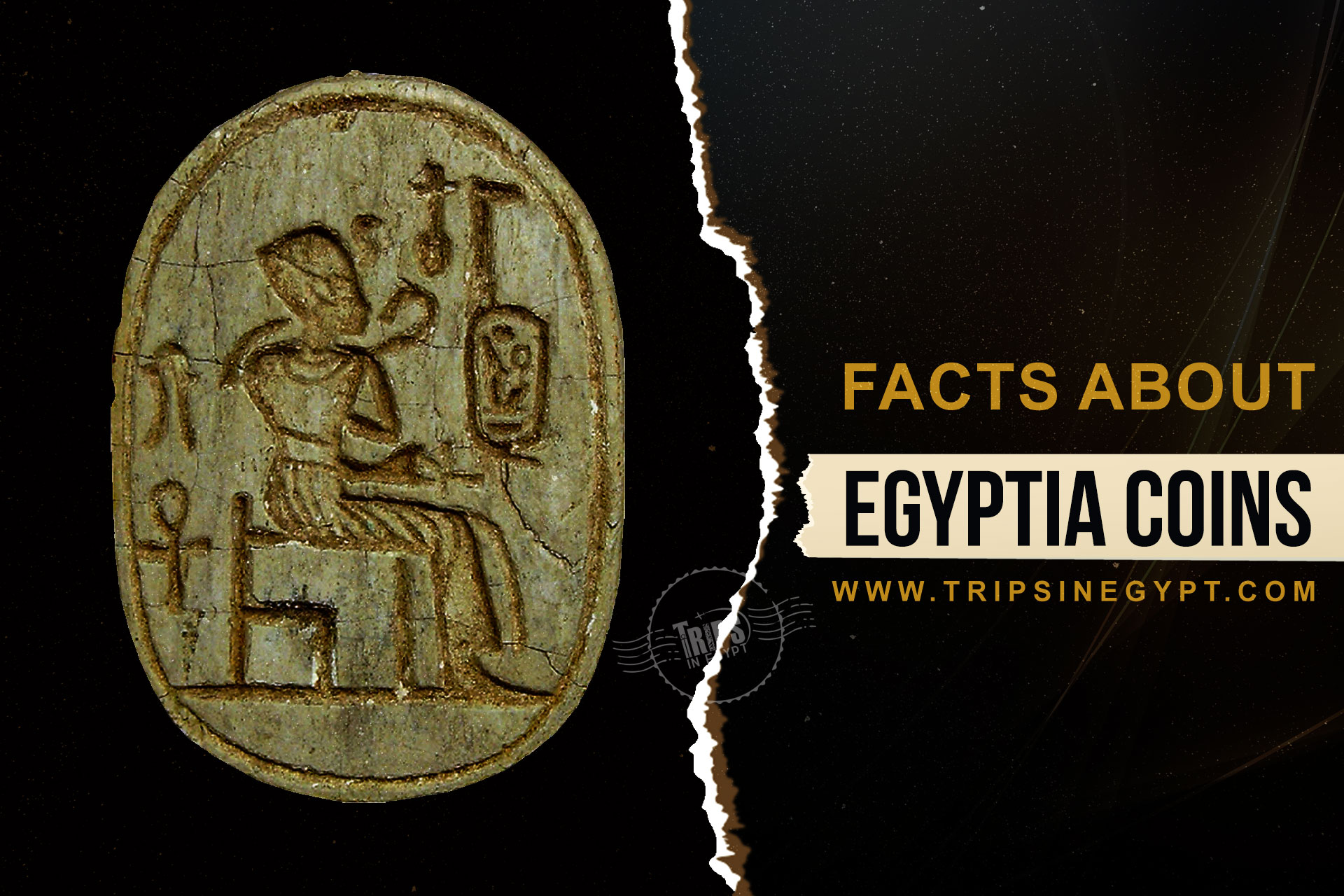
Here are some interesting facts about ancient Egyptian coins:
- There are Egyptian cities that were established to exchange products for Egyptians.
- The hired laborers were paid with bread and beer.
- The system of baking has equal pay by standardizing the size of bread and beer jars.
- The ancient Egyptian cities ran centralized huge warehouses that functioned to the recent banks.
- The “Deben” was the main method of determining the worth of objects based on their weight.
- There are some countries that established the first coins to Egypt such as Rome, Greece, and Persia.
- Pharaoh Teos established the first official gold coin in Egypt which was known as “stater”.

Conclusion
Trips in Egypt has amazing packages which include visiting the Museum of Egypt and witnessing the greatness of the Ancient Egyptian coins such as the Museum of Egyptian Antiquities. Contact our operations department, so we can arrange the best trip suited to you to the wonderful museums of Egypt. Do not hesitate to call us anytime and make sure that Ancient Egyptian coins will captivate you.
Great vacation for 4 days in Cairo Egypt accompanied by an e...
Duration
4 Days / 3 Nights
Availability
Everyday
An Incredible 5 days Cairo & Alexandria tour package to expl...
Duration
5 Days / 4 Nights
Availability
Everyday
Explore Egypt's ancient wonders on a 6 days vacation to Cair...
Duration
6 Days / 5 Nights
Availability
Everyday
Breathtaking 7 days Cairo, Luxor & Hurghada holiday to explo...
Duration
7 Days / 6 Nights
Availability
Everyday
FAQ
What Should I Wear While Being in Egypt?
You should wear whatever you want. It is advised to wear something light from cotton or linen, comfortable and put on sunblock during your time in Egypt in the summer and wear comfortable footwear like a closed-toe shoe to sustain the sandy terrain.
What to Pack for Your Egypt Tour?
You should bring a brimmed hat and sunglasses if you not used to the Egyptian sun &pack everything you could ever need and put in a small bag so you could move easily between your destinations.
Are All Nile Cruises Available at Any Time?
Yes, it is available all years. as the Nile from Aswan to Luxor takes three to four days of sailing on Monday, Wednesday and Friday for the total cost of 600$ and the Nile cruise from Luxor to Aswan take four to five days in Saturday, Monday and Thursday for the coast of 650$.
Why book Trips in Egypt?
We have experience in vacation planning for more than 10 years & our staff consists of the most professional operators, guides and drivers who dedicate all of their time & effort create the perfect vacation. All of our tours are customized by Travel, Financial & Time advisors to fit your every possible need during your time in egypt. we always keep in mind that your safety & comfort are our main priority until you return home.
Is it safe to travel to Egypt?
Yes, it is absolutely safe to travel to egypt, You will feel secure in Egypt as the current atmosphere of the country is very peaceful after the government took powerful measures like restructuring the entire tourist police to include all the important and tourist attractions in Egypt and construct an entire environment dedicated for ensuring the lives of all tourists.
What are Egypt's Visa Requirements?
They are very simples, If you want to apply for a Visa On Arrival that lasts for 30 days then you should be one of the eligible countries(check the link), have a valid passport with at least 6 months remaining and pay 25$ USD entry fee in cash. As for the E-Visa for 30 days, you should have a valid passport for at least 8 months, complete the online application, pay the e-visa fee then print the e-visa to later be presented to the airport border guard. You could be one of the countries eligible for a free visa for 90 days.
What is the Weather is Like?
The temperature of Egypt ranges from 37c to 14 c, Summer in Egypt is somehow hot and winter is cool and mild but sometimes it becomes cold at night. The average of low temperatures vary from 9.5 ¡ÆC in the wintertime to 23 ¡ÆC in the summertime and average high temperatures vary from 17 ¡ÆC in the wintertime to 32 ¡ÆC in the summertime while the temperature is moderate all along the coasts.
What is the Best Time of Visit Egypt?
It is known the best time to travel to Egypt is in the winter from September to April as the climate becomes a bit tropical, a warm atmosphere with a winter breeze. You will also be notified a week before your trip if the weather is unsafe or if any changes have been made.
Should I Give Tips in Egypt?
It is totally up to you, but if you choose to you can tip the servers at your restaurant 5-10% by handing it to them directly and 5 Egyptian Pounds as a general tip of anyone.
Can I Enter the Pyramids?
Yes, you can enter the pyramids for the small fee of 20$.
How to Enjoy Egypt During Ramadan?
Ramadan is a special time of year for Muslims that should be celebrated by non-Muslims and feel the essence of the Islamic culture. You can fast with the Muslim or just observe but you are always welcome to join the celebrations and festivals.

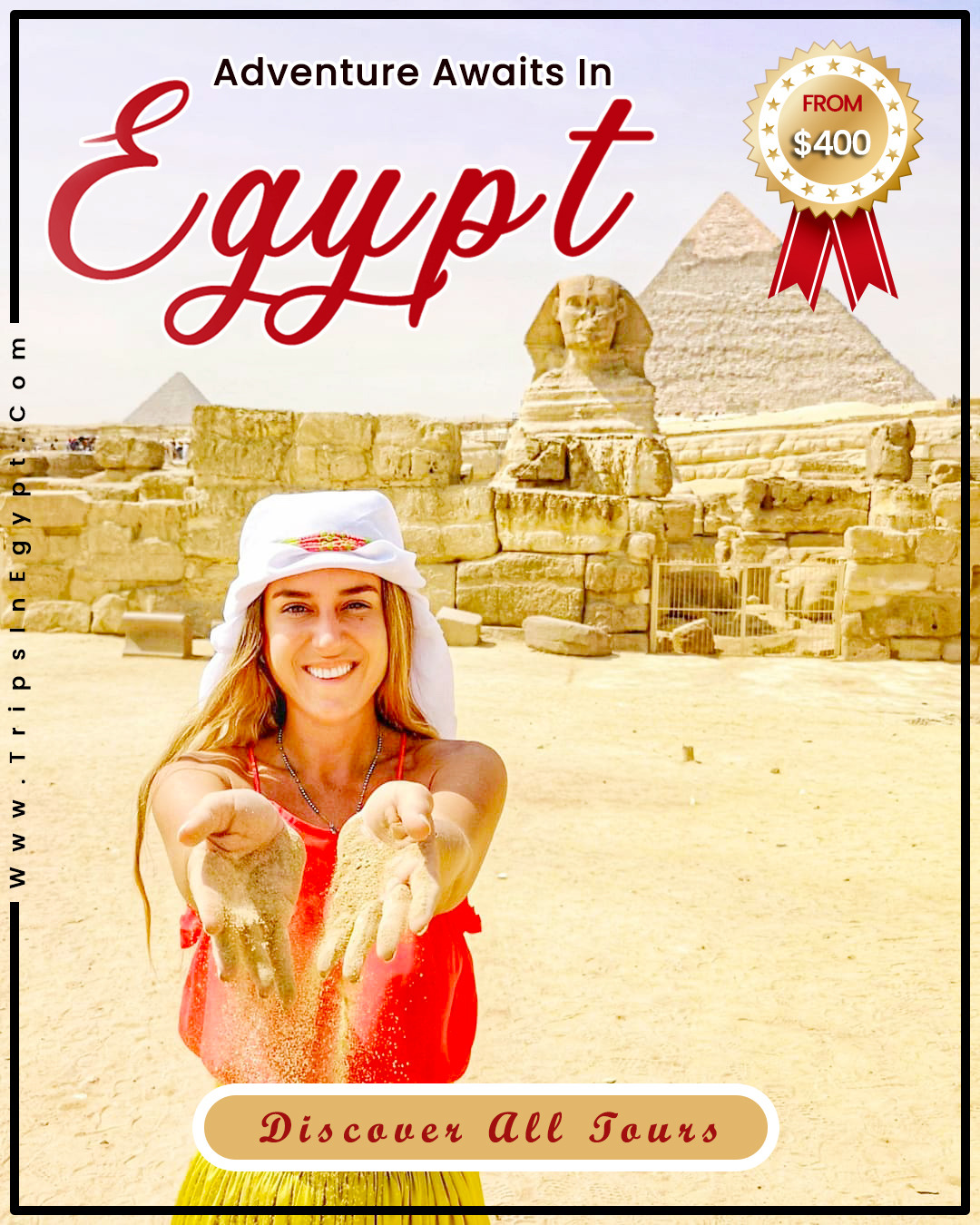
Request a Call Back